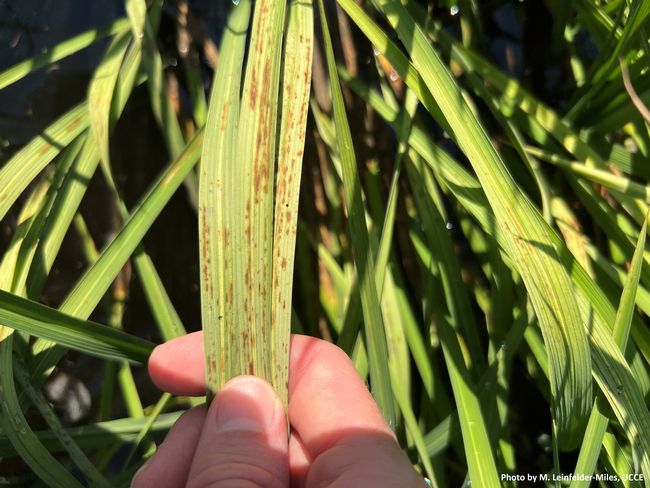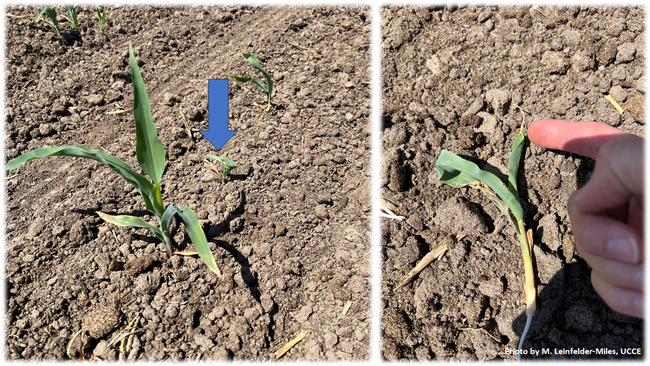Diagnosing problems in the field is never an easy task, but it is one of the most interesting aspects of my job because I usually never encounter the same set of circumstances twice. This summer, I have been called out on a few interesting diagnostics calls, and I wanted to share some observations.
I visited a blackeye bean field that was planted at the end of June. Since June was unusually cool this year, the grower's planting was delayed. Blackeyes shouldn't be planted until the soil temperature reaches at least 65 degrees F, and the cool spring conditions kept the soil cool. About six days after planting, the beans were only sporadically emerged. The plants that had emerged looked healthy, but the overall stand was poor. The grower said that soil moisture was good at the time of planting. I scratched down and found the seed about three inches deep, which is perhaps a little bit deep for blackeyes. Seed had germinated, and the germinated seed looked healthy with no apparent seedling diseases. Seedling diseases include Pythium and Rhizoctonia. Pythium symptoms appear as water-soaked lesions, and the hypocotyl eventually ‘dampens off'. Rhizoctonia symptoms appear as reddish-brown lesions that can girdle the stem. We felt better that it didn't appear to be a disease problem. I reached out to my farm advisor colleague, Rachael Long, to get her take on the situation, and she agreed that this was likely delayed emergence due to cool soil and a deeper planting depth. In the end, we decided to test our patience, wait a few more days, and see what would happen. After another five days, the grower let me know that the plants had emerged, and the stand looked good!
Figure 1. Leaf spotting on rice from suspected K deficiency.
Figure 2. Suspected heat damage on corn due to hot soil temperatures at emergence.
The UCCE network has a breadth of experience to help identify problems and provide potential management solutions. Please don't hesitate to contact me if you'd like help with diagnosing problems in the field.

